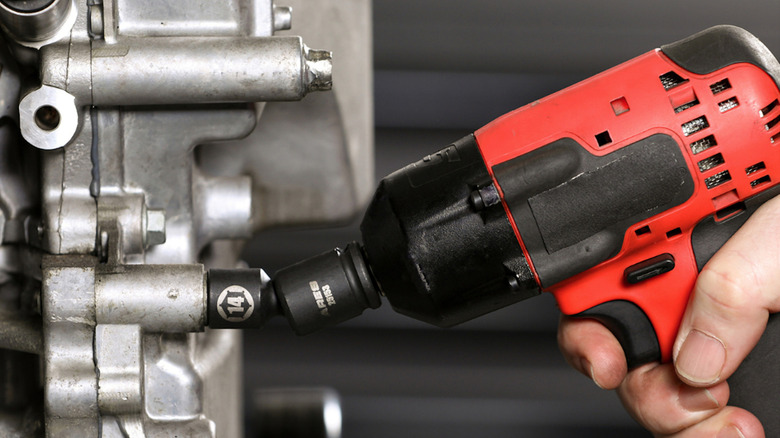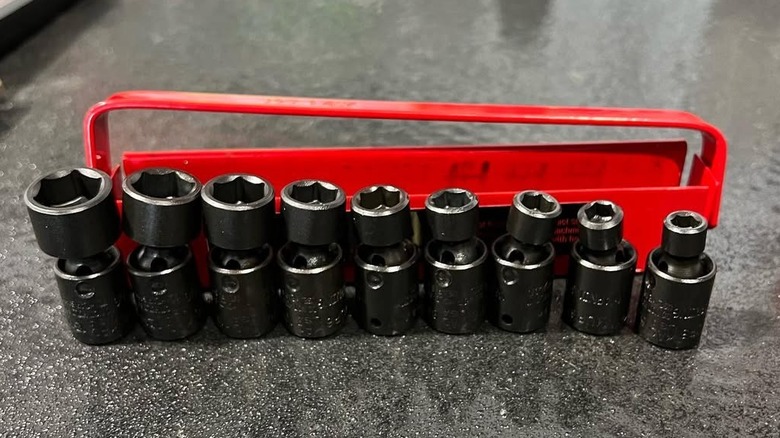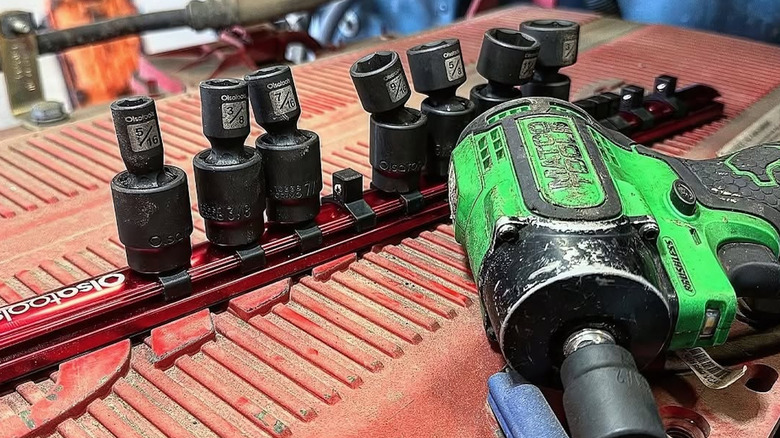What Is A Swivel Socket For? Here's When To Use It
Whether you're a professional mechanic or a dedicated DIYer, chances are you've run into a situation where a standard socket just couldn't reach the bolt you needed to tighten or remove. Maybe it was tucked behind an engine component. Perhaps it was wedged under a piece of furniture. No matter the situation, swivel sockets are your best bet for tackling mechanical tasks in tight, hard-to-reach spaces.
Unlike traditional sockets, swivel sockets (sometimes called flex sockets) incorporate a flexible joint that allows the socket head to bend and rotate. It combines the reach and grip of a standard socket with a ball joint mechanism so it can pivot with a full range of motion. This flexibility gives you the freedom to work those bolts and fasteners at awkward angles without needing to take apart the whole thing just to reach them. From automotive maintenance to plumbing tasks, or home renovation projects and even furniture assembly, it's enough to save you plenty of time, and minimize frustration.
Swivel sockets vs. universal joints
Though it often gets confused with the universal joint socket, swivel sockets have a completely different purpose. A swivel socket is specifically designed to be used with ratchets and wrenches. Its main function is to give angular access to fasteners. The joint is built into the socket itself, giving you easy access to bolts at a variety of angles without having to give up grip or torque in most manual applications. That said, it's not intended for high-speed or continuous rotation tasks.
Universal joints, by comparison, are made to give you rotational motion between two misaligned shafts. They feature two yokes connected by a cross-shaped "spider." That's what gives you continuous rotation across multiple angles. They're engineered to handle high torque and power transmission — something swivel sockets typically aren't built for. While both will give you angular flexibility, swivel sockets are better optimized for manual use, while universal joints are better suited for higher torque.
When and where to use swivel sockets
So, when should you choose a swivel socket? Anytime you're manually working in tight spaces and need to fasten or loosen bolts at off-angles – under a sink, deep in an engine bay, or behind a cabinet, to name a few examples.
Of all these scenarios, one of the most common uses is in automotive repair. Engine compartments are notoriously cramped, and if you want to work on spark plugs, suspension bolts, or exhaust system fasteners, it can be really tough — if not impossible — with only a standard socket. A swivel socket makes it possible to reach these hidden bolts without the headache. Impact swivel sockets made from high-strength materials like chrome molybdenum steel are especially useful in these cases. They're built to handle the torque produced by impact wrenches, making them perfect for especially stubborn or rusted bolts.
Of course, swivel sockets do come with a learning curve. One common issue is wobbliness, especially when extensions are used. To cut down on this, go for shorter extension bars whenever possible. Long extensions can make it harder to maintain control, especially when trying to apply torque at an angle. It's also important to not apply excessive force with a standard swivel socket. Doing so can damage the joint. For high-torque tasks, always use an impact-rated socket, which is specifically built to endure the stress of power tools.


